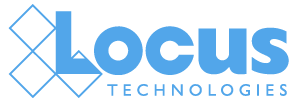Data Input for Cloud-Based Environmental Data Management
The deadline to transfer sufficient compliance allowances into your account to meet your compliance obligation.
The deadline to transfer sufficient compliance allowances into your account to meet your compliance obligation.
The EPA added two PFAS chemicals as Hazardous Substances. Learn how Locus software is keeping up with PFAS chemical tracking and reporting.
Your company can stay ahead of regulations, minimize risks, and unlock new opportunities for success in the area of sustainable refrigerant management.
Learn how Locus provides advanced data management, operational optimization, and regulatory compliance tools to achieve greater efficiency.
The US EPA’s Clean Ports Program offers support for emissions reduction initiatives as port-related environmental challenges increase.
The deadline to transfer sufficient compliance allowances into your account to meet your compliance obligation.
At Locus Technologies, we are committed to providing cutting-edge visualization tools to enhance your data analysis experience.
Our Incident Management software can revolutionize your safety protocols, prevent incidents, track incidents, and respond to incidents.
In the ever-evolving landscape of environmental software solutions, Locus Technologies stands out for 27 years of continuous innovation.
Managing permits for construction projects can be complex but crucial for smooth operations. Our latest article delves into this topic.
Locus Technologies » Applications » EHS Compliance » Page 9
299 Fairchild Drive
Mountain View, CA 94043
P: +1 (650) 960-1640
F: +1 (415) 360-5889
Locus Technologies provides cloud-based environmental software and mobile solutions for EHS, sustainability management, GHG reporting, water quality management, risk management, and analytical, geologic, and ecologic environmental data management.
